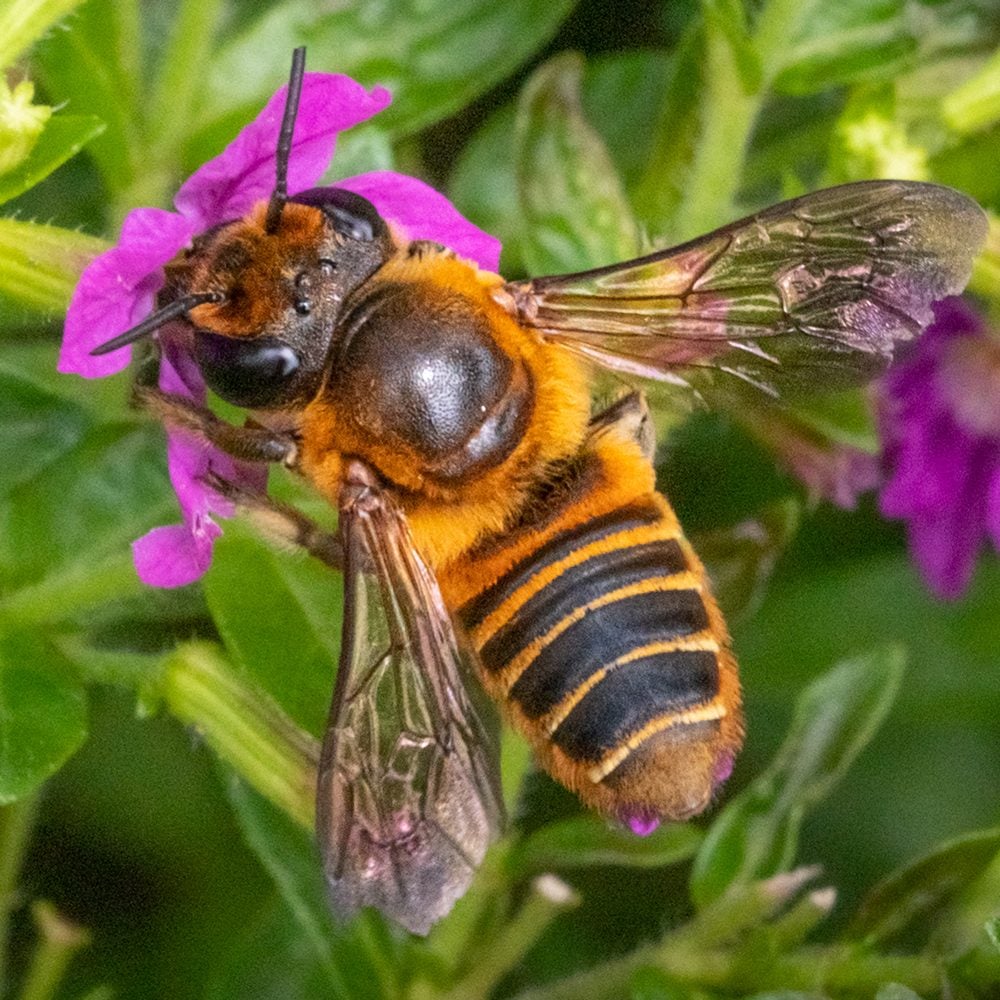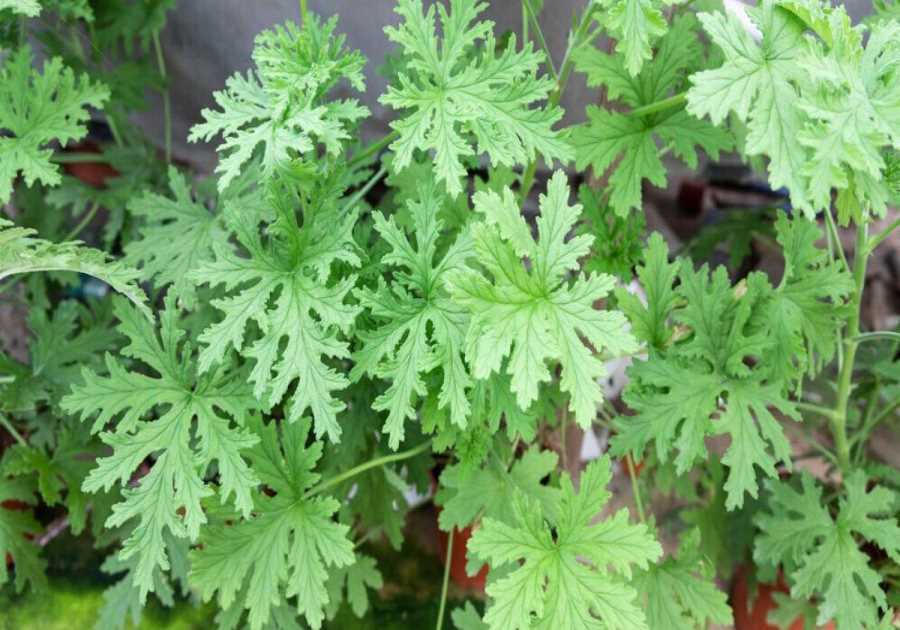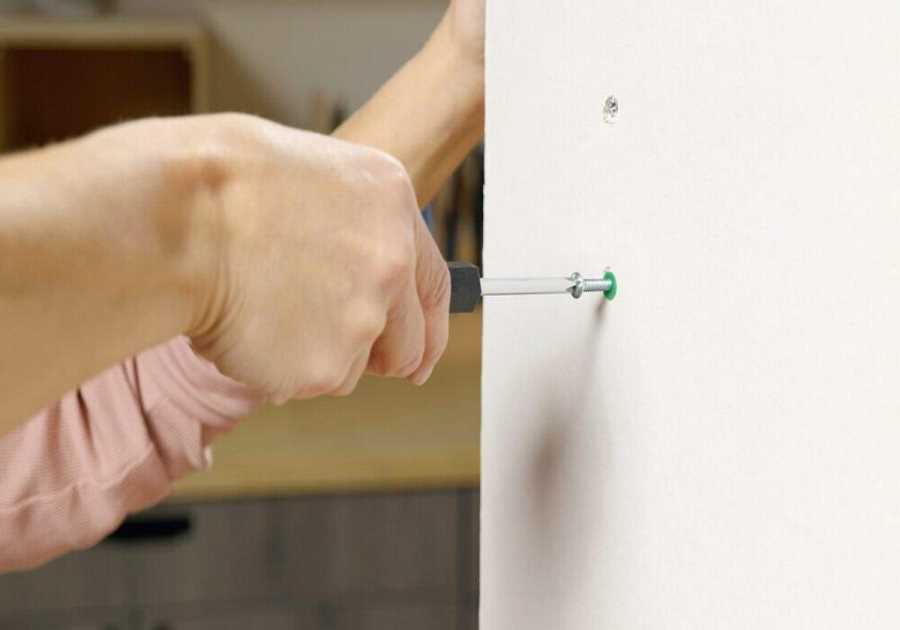Between Winnie the Pooh and The Bee Movie, generations have become enthralled with honey bees. We’ve also been led to believe honey bees are mainly responsible for pollination. However, this isn’t the case.
More than 20,000 bee species exist throughout the world, with about 4,000 native to North America. Only 10% of these species are social bees, like honey bees and bumblebees. The other 90% are solitary bees.
Many of us may not be aware of solitary bees, but they play an indispensable role in pollinating plants, flowers and crops. We’ve tapped two experts to explain everything you need to know about these insects, including how you can help them thrive, as many species of solitary wild bees are declining.
What Are Solitary Bees?
Solitary bees are exceptional pollinators for backyard gardens, farms and orchards. As their name suggests, they live independently— not in a colony with a queen and workers, like honey bees and bumblebees.
We asked Mary Phillips, the head of Native Plant Habitat Strategy and Certifications for Garden for Wildlife/Certified Wildlife Habitat Programs at the National Wildlife Federation, about them.
“Most native bees are solitary nesters,” she says. “They don’t form hives, create honey or live a communal lifestyle. Instead, they lay their eggs in a series of tiny chambers in tunnels in the ground, in hollow plant stems, or in decaying wood.”
Each female builds a nest, collects pollen and nectar and lays eggs without help from other bees.
Solitary bees are also known to be friendly, gentle, easy to raise and fun to observe. Dave Hunter, founder and owner of Crown Bees, and author of Mason Bee Revolution, says, “The objective of solitary bees is to survive and lay eggs. They are super gentle. You can even hold them in your hand.”
They’re also critical to the survival of North America’s native plants, other wildlife and people alike. “They provide ecological services to soil and make great garden pollinators of native perennials, and also some vegetables,” Phillips says.
Types of Solitary Bees

One-quarter of solitary bees live in cavities — tunnels created by other insects, hollow stems of plants and artificial bee houses and hotels. Three-quarters live nest in the ground, Hunter says, laying their eggs in tunnels just below the surface.
Examples of common solitary bees include mason bees, carpenter bees, sweat bees and leaf cutter bees, which are generalist pollinators that visit a variety of flowers, fruits and vegetables.
“Mason bees are valuable for their ability to pollinate native crops of fruits and nuts and have been increasingly put to use in commercialized farming,” said Phillips. “They get the name mason bees due to the way they use clay to make partitions for their nests and seal the entrance.”
Mining bees, plasterer bees and digger bees can only forage for specific host plants within approximately 500 feet of their nesting area.
What Makes Solitary Bees Unique?
Certain characteristics set them apart from the more familiar honey bees and bumblebees.
Stinging
According to Phillips, only 30% of female solitary bees have a stinger, which they’ll only use if they or their nesting site is threatened. This is why you can usually hold solitary bees in your hand safely, and you need no special protective equipment when raising them in your backyard.
Pollen collection
One significant difference between solitary and honey bees is the way they gather pollen. Honey bees gently land on blossoms and collect pollen on their bodies. They create a paste by mixing the pollen with saliva, then storing it in saddlebags on their hind legs. However, this doesn’t result in efficient pollination.
On the other hand, solitary bees effectively spread pollen, which is vital to plants.
“Solitary bees are not as sophisticated as honeybees,” said Hunter. “They belly-flop into the flower, and most pollen falls off because it is carried loosely on their dry hairy bodies. They end up spreading more pollen around. While they are bad at gathering pollen, they are better at spreading it.”
Life cycle
Solitary bees have a much faster life cycle than honey bees.
“Solitary bees live for about a year, with the majority of that time spent developing in their nesting chamber where they hatch and pupate,” says Phillips. “Their adult lives, during which they are active, lasts approximately three to eight weeks. Females tend to live a bit longer, as they need to build a nest and lay eggs.”
They’re alive for a year but only flying for about six weeks, according to Hunter. By comparison, the average life expectancy for a queen honey bee is up to five years, while worker bees usually live two to six weeks in the summer and about 20 weeks in the winter.
How To Save The Bees
It turns out it’s not the honey bees that need rescuing — it’s the solitary bees. As Phillips says, “These bees face threats ranging from habitat loss and pesticides to disease and competition from introduced species, along with changes in climate that can impact their nesting behaviors.”
Hunter says you can help by raising solitary bees in your yard. “My company teaches people simple practices to take care of and raise cavity-nesting bees,” Hunter says. “We work with researchers to understand the bees and believe in teaching to make change happen.”
Here are some other ways to help:
- Stop spraying pesticides on your lawn, and ask your neighbors to do the same.
- Attract native solitary bees to your garden by planting native flowering plants, like keystone host plants.
- Make sure ground-nesting bees can burrow in the ground and provide appropriate cavities for cavity-nesting bees.
- Build awareness by educating others about solitary bees — say, by sharing the link to this story with your friends and social media followers.
Did you miss our previous article...
https://rsssuperfeeds.com/life-hacks/caulk-interior-trim






